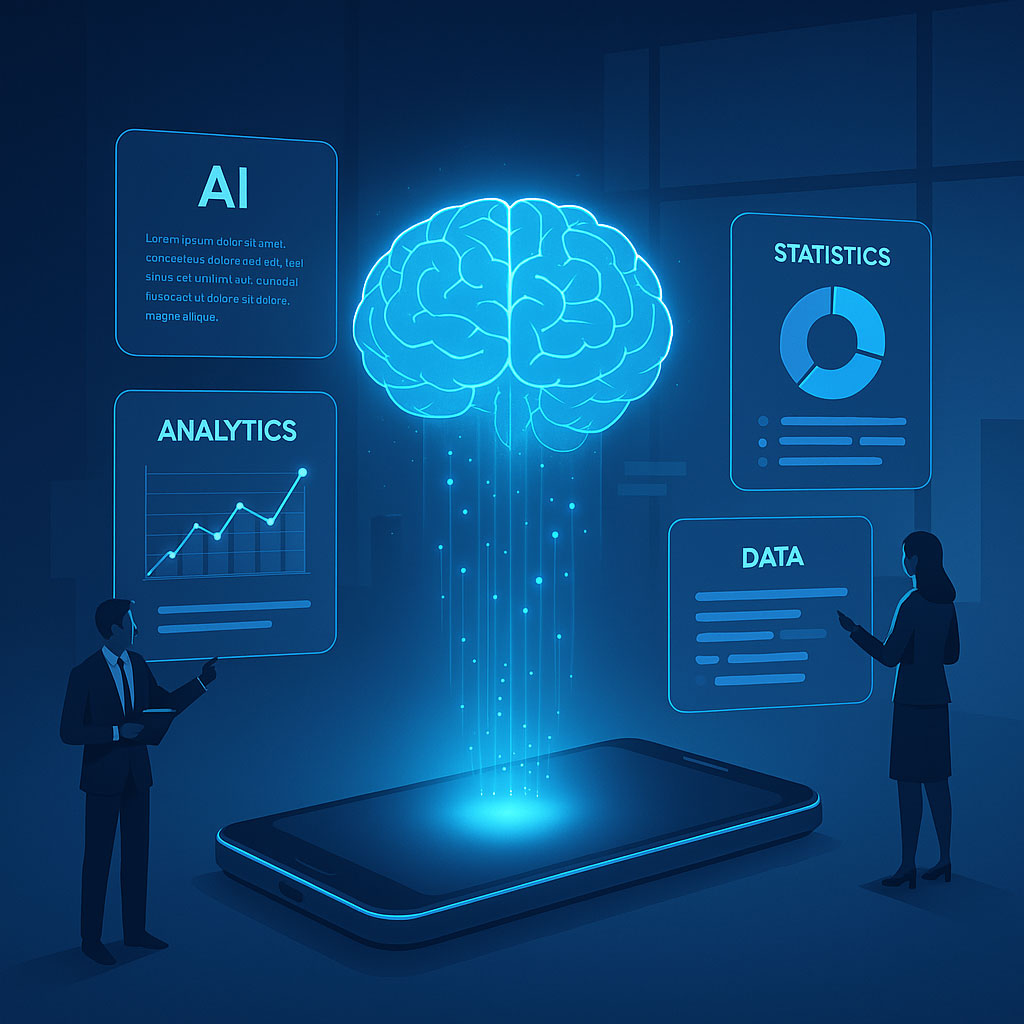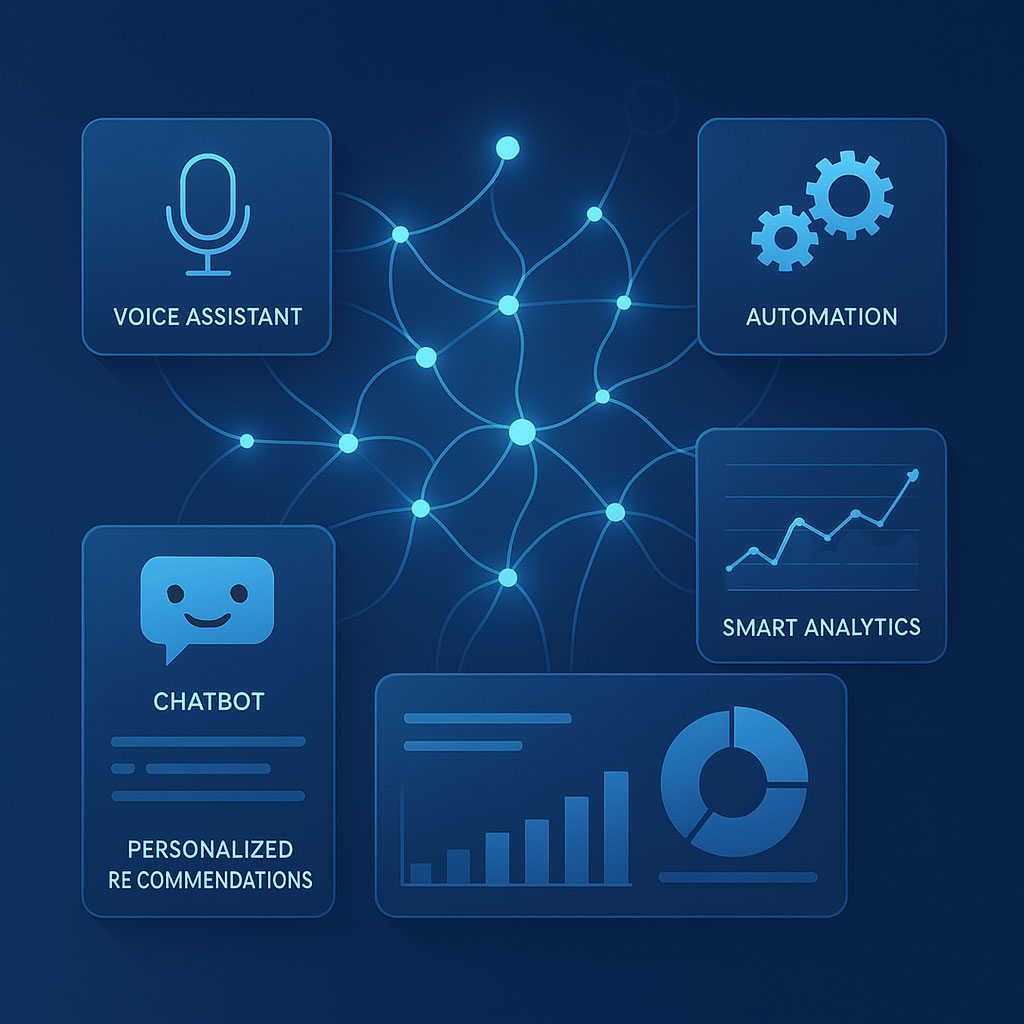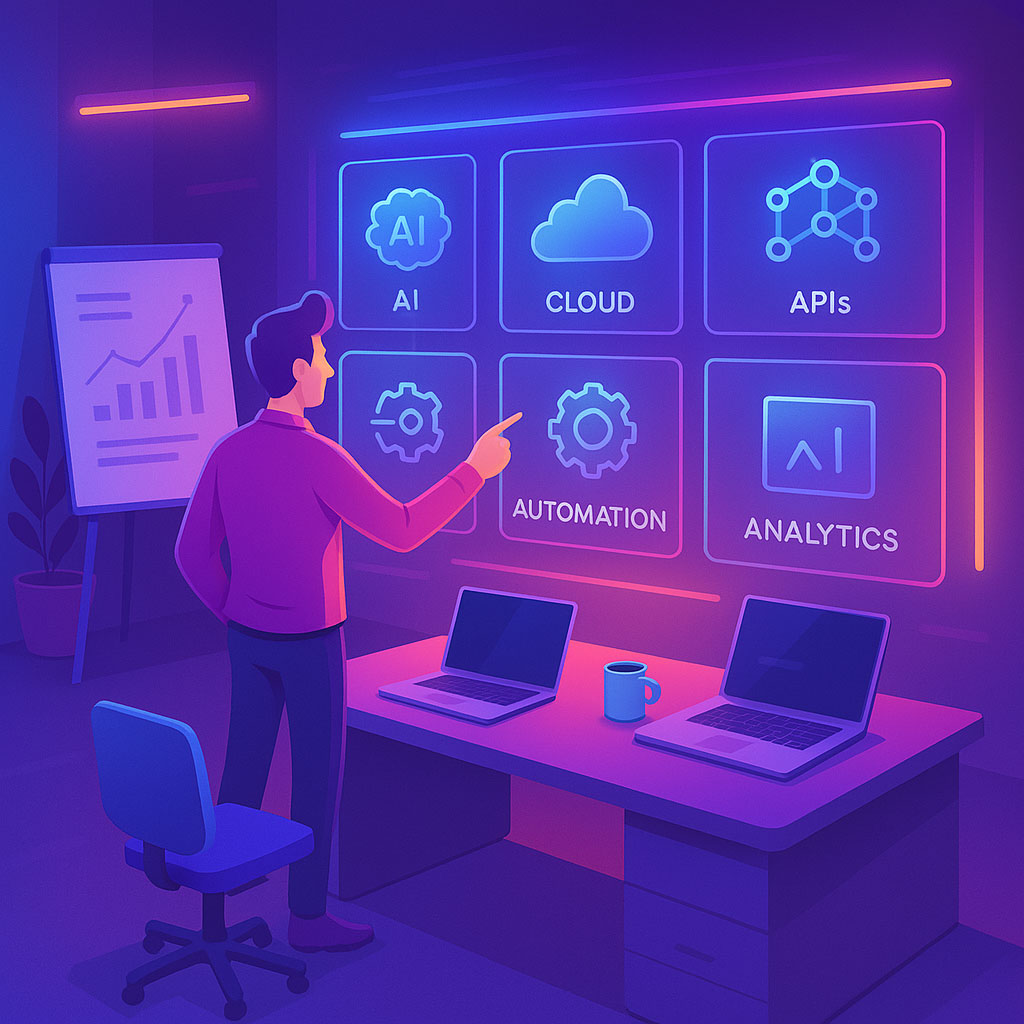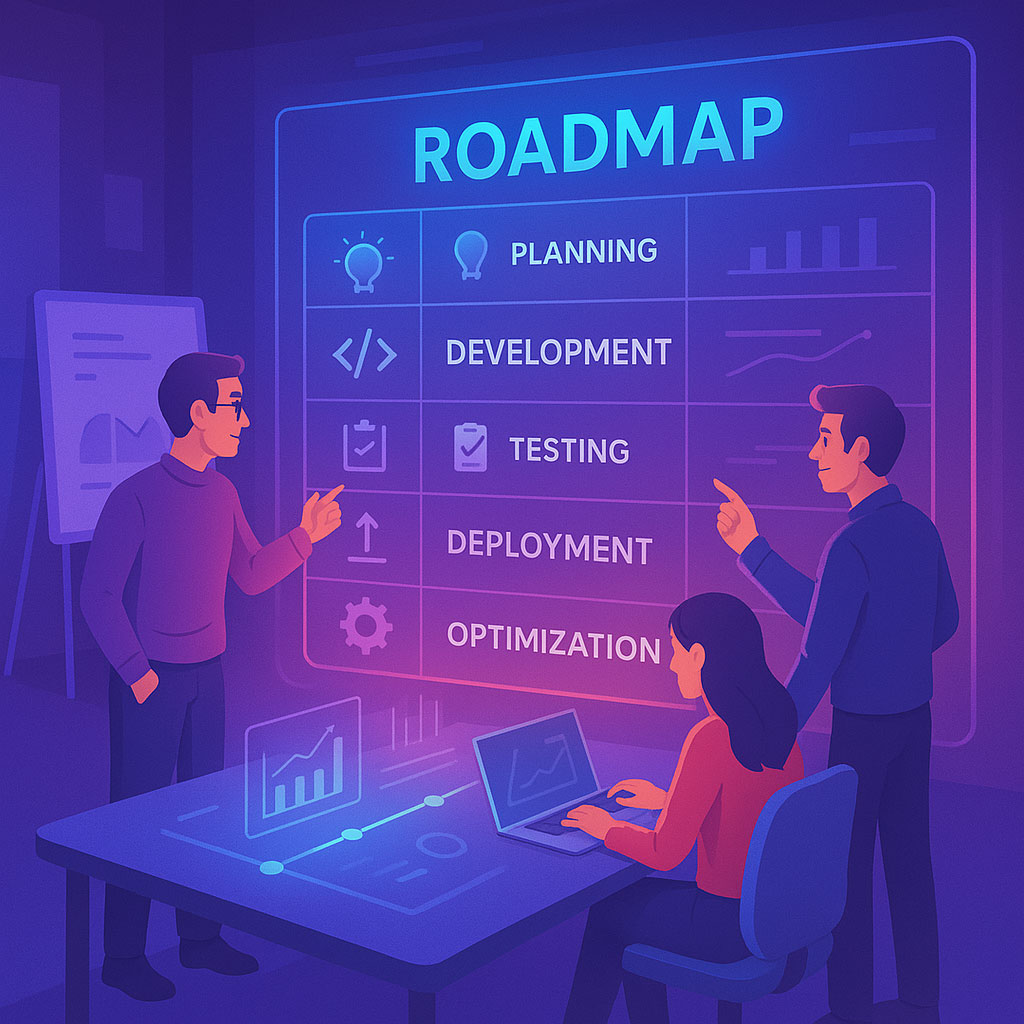Ever wonder what makes some apps feel like they get you? It’s likely AI at work. We’re not just talking trendy tech anymore; AI is changing the game for how web and mobile apps function. Think smarter suggestions and chatbots that don’t sound like robots. Companies using AI are seeing users stick around longer and getting more done.
Want to know how to get in on this? We’ll break down the benefits of AI, look at how others are using it, and give you a simple guide to adding it to your own apps. Whether you’re managing a product, coding, or just curious, this is your guide to making things smarter. We’ll skip the fluff and focus on what matters: the good stuff, what to think about, and how to make it happen.
The Business Value of AI in Apps

AI isn’t just a shiny new toy; it’s a serious business booster. Here’s where it can really make a difference:
Personalization and Engagement
Remember how Netflix always seems to know what you want to watch? Or how Amazon suggests the perfect thing at the right time? That’s personalization powered by AI.
- Examples: Content that changes based on what you like, apps that guide you based on your behavior, and smart suggestions that seem to read your mind.
- Benefits: Happy users are loyal users. When an app gets them, they stay engaged and keep coming back. Plus, personalization leads to more action – think upgrades, purchases, and clicks. Imagine an AI spotting a free user who’s really active with the premium features. Bam! An offer pops up, perfectly timed to convert them.
Automation and Efficiency
Tired of doing the same boring tasks over and over? Let AI handle it.
- Examples: Chatbots answering basic questions, programs filling out forms automatically, and systems predicting equipment failures before they happen.
- Benefits: Automating the mundane means saving money and freeing up your team. Instead of repetitive tasks, they can focus on the really important stuff – the creative, strategic work that moves the needle. Chatbots can handle a ton of simple questions, leaving the tougher ones for humans. Win-win.
Enhanced Decision-Making
Digging through mountains of data is a pain. AI can sift through it all and find the hidden gems.
- Examples: Spotting hidden patterns in your data, predicting future trends, and flagging potential problems before they blow up.
- Benefits: AI helps you make smarter choices, faster. You can dodge risks and jump on opportunities before anyone else. Imagine an AI system detecting a surge of negative comments about a particular feature. The developers can fix it fast, before it hurts the app’s reputation.
Popular AI-Powered Features

So, what does AI look like in real apps? Here are some of the most common ways it’s being used:
Chatbots and Virtual Assistants
Your always-on support team, ready to help customers at any time. Customer service, qualifying leads, and answering frequently asked questions instantly.
Natural Language Processing (NLP) helps understand human language, and sentiment analysis gauges the tone to tailor responses. The best chatbots use context to personalize the experience.
Recommendation Engines
The brain behind those “you might also like” suggestions.
- Use Cases: Suggesting products on e-commerce sites and recommending content on media platforms.
- Key Technologies: Collaborative filtering uses data from many users to predict what you’ll like, while analysis of your own behavior adds a personal touch. Online stores might use machine learning to suggest items that are often bought together, boosting sales.
Computer Vision and Image Recognition
Giving apps the power to “see” and understand images.
- Use Cases: Identifying objects in pictures, recognizing faces, and creating augmented reality (AR) experiences.
- Key Technologies: Neural networks and convolutional models make it possible to search with images or use facial recognition for security. Imagine searching for a specific product just by uploading a photo.
Natural Language Processing (NLP)
Helping machines understand and process human language.
- Use Cases: Analyzing customer sentiment, translating languages, and summarizing text.
- Key Technologies: Large language models (like GPT) and part-of-speech tagging enable accurate text analysis. Advanced models can even generate personalized content based on what you input.
Predictive Analytics and Forecasting
Using past data to predict future trends and outcomes.
- Use Cases: Forecasting sales, predicting customer churn, and assessing risk.
- Key Technologies: Time-series analysis and regression models identify patterns and relationships in data. Banks can use predictive analytics to spot fraudulent transactions in real-time.
Selecting the Right Tools & Technologies

Choosing the right tools is key to successful AI integration. Here’s what to consider:
Cloud-Based AI Services
The quickest route to deployment, offering ready-made AI solutions. For example: AWS SageMaker, Google Cloud Vertex AI, and Azure Cognitive Services. These services provide everything you need, including scalable infrastructure and fast deployment.
Open-Source Frameworks
Giving you maximum control and customization.
- Examples: TensorFlow, PyTorch, and scikit-learn.
- Benefits: Open-source frameworks allow you to build custom models and access a large community for support. They also encourage collaboration and innovation.
Hybrid Approaches
A mix-and-match approach for the best of both worlds.
- Combining cloud services with open-source libraries gives you control over data and cost while still leveraging the power of pre-built solutions. This approach lets you fine-tune things to meet your specific needs and budget, especially important in regulated industries.
Implementation Roadmap

Here’s a step-by-step guide to adding AI to your apps:
Project Scoping and Use Case Identification
- Figure out exactly what you want to achieve (e.g., boost engagement, reduce churn, increase sales).
- Set clear, measurable goals (e.g., conversion rate, user satisfaction).
Data Collection and Preparation
- Identify the data you’ll need (user behavior, product info, logs).
- Make sure your data is clean, accurate, and properly labeled. Bad data leads to bad AI.
Model Development and Training
- Choose the right algorithms or pre-trained models.
- Train, validate, and test your models with relevant data sets.
Integration with Web or Mobile Apps
- Implement APIs to get real-time predictions into your app.
- Ensure smooth communication between the front-end and back-end.
Testing and Quality Assurance
- Test performance (speed, accuracy).
- Get user feedback and iterate.
Deployment and Ongoing Monitoring
- Set up CI/CD pipelines for regular model updates.
- Monitor performance and fine-tune as needed.
Security, Privacy, and Compliance
Protecting data and respecting privacy is paramount.

Data Protection
Encrypt sensitive data and follow best practices for data storage.
Control access to models and data sets with role-based permissions.
Regulatory Considerations
Comply with GDPR, CCPA, HIPAA (if applicable), etc.
Be transparent about data usage and get user consent.
Ethical AI Considerations
- Avoid biased data sets and outcomes.
- Ensure fairness and transparency.
Real-World Success Stories
Here’s how others are winning with AI:
E-Commerce Personalization
A retail site saw a 15% jump in sales after adding personalized product recommendations.
- KPI Impact: Higher average order value, increased user engagement, and improved customer satisfaction.
On-Demand Services
Ride-hailing and food delivery apps use chatbots and predictive models to optimize pricing and improve user experience.
- Examples: Enhanced operational efficiencies led to improved overall satisfactory statistics on both customer interaction sides.
Financial Services
Banks are using AI to detect fraud, reducing losses by 30% in a single year.
Challenges and Best Practices
Know the pitfalls, avoid the pain.
Common Pitfalls
- Underestimating data needs, overfitting models, ignoring user feedback.
- Relying on “black box” AI without understanding how it works.
Success Factors
- Iterate and test frequently.
- Collaborate closely between developers, data scientists, and business stakeholders.
Future-Proofing
- Design your AI architecture for scalability and updates.
- Stay on top of emerging AI trends and tools.
Conclusion
AI can revolutionize your apps, boosting user engagement, efficiency, and revenue. Plan carefully, from data collection to monitoring, to maximize your AI investment.
Ready to see what AI can do for your app? Contact us for a free AI readiness assessment and consultation. Let’s build something amazing!

